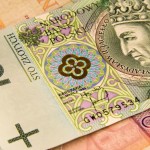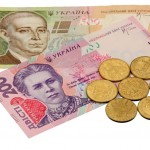US dollar edged lower against the Japanese yen on Friday, following the release of series of mixed economic data out of Japan, despite expectations of a possible stimulus tapering by the Federal Reserve Bank.
USD/JPY reached its lowest point today at 98.06 at 2:20 GMT, after which consolidation followed at 98.16, down by 0.19% for the day. Support was likely to be found at August 28th low, 96.88, while resistance was to be encountered at August 23rd high, 99.15.
Today Markit Economics said in a report that Japanese manufacturing PMI (Nomura/JMMA Japan PMI) came in at 52.2 in August, after showing a reading of 50.7 a month ago. Values above the key level 50.0 are a sign that activity in the sector has expanded.
The annual consumer price index (CPI) reached 0.7% in the month of July in line with expectations, from a 0.2% advance during the preceding month, marking the fastest rate of increase since 2008, because of higher energy costs. This result implied that Prime Minister Abes efforts to drag the country out of the 15-year period of deflation, have probably begun to pay off.
The core consumer price index (CPI), which excludes volatile components such as food costs, rose to an annualized 0.7% in July, from a 0.4% advance in June, while experts had anticipated an increase to 0.6%.
Household spending in Japan showed an 0.1% uptick in July on annual basis, while in June the indicator registered a drop by 0.4%.
Japanese unemployment rate decreased by 0.1% to 3.8% in July, while preliminary estimates pointed that this rate will remain stable.
Additionally, industrial production in the country rose at a lesser rate than projected in July compared to June, by 3.2% instead of 3.7%, while in June industrial output shrank by 3.1%. Annually, the indicator advanced 1.6% in July, from a drop by 4.6% in June.
Last but not least, housing starts in Japan showed improvement by 12.0% in July 2013 compared to July 2012, while in June the indicator increased by 15.3%. Analysts had forecast a 14.3% advance.
Japanese currency rose 0.3% against the greenback also on speculation that Japanese exporters were making purchases of the national currency, as they bring income in the country at the end of the month. “The yen is stronger on month-end flows, not any news,” said Yuji Saito, the director of foreign-exchange at Credit Agricole Corporate & Investment Bank in Tokyo, cited by Bloomberg. “Any gains will be limited by option-related selling beyond 98 per dollar.”
In the mean time, the US dollar received solid support yesterday, poised for a third weekly advance, after US Department of Commerce said that the revised Gross Domestic Product expanded by 2.5% during Q2 annually, exceeding expectations of a growth rate of 2.2%, while the preliminary estimate pointed a 1.7% expansion. Additionally, according to data by the Department of Labor, initial jobless claims in the United States dropped by 6 000 to 331 000 during the week ending on August 24th 2013, almost in line with experts’projections of a drop to 332 000 claims. The indicator remained close to its lowest point, recorded in October 2007.
“The main scenario in the market is for the Fed to start tapering in September, especially after the substantial upgrade to U.S. growth,” said Noriaki Murao, the managing director of the marketing group in New York at the Bank of Tokyo-Mitsubishi UFJ Ltd, cited by Bloomberg. “That’s given the dollar a boost.”
Market players were still wary, amid concerns over a possible US-led military strike against the Syrian government, following the alleged usage of chemical weapons last week.
Elsewhere, the Japanese yen was gaining against the euro as well, with EUR/JPY cross down by 0.17% for the day to trade at 130.02 at 6:49 GMT.





